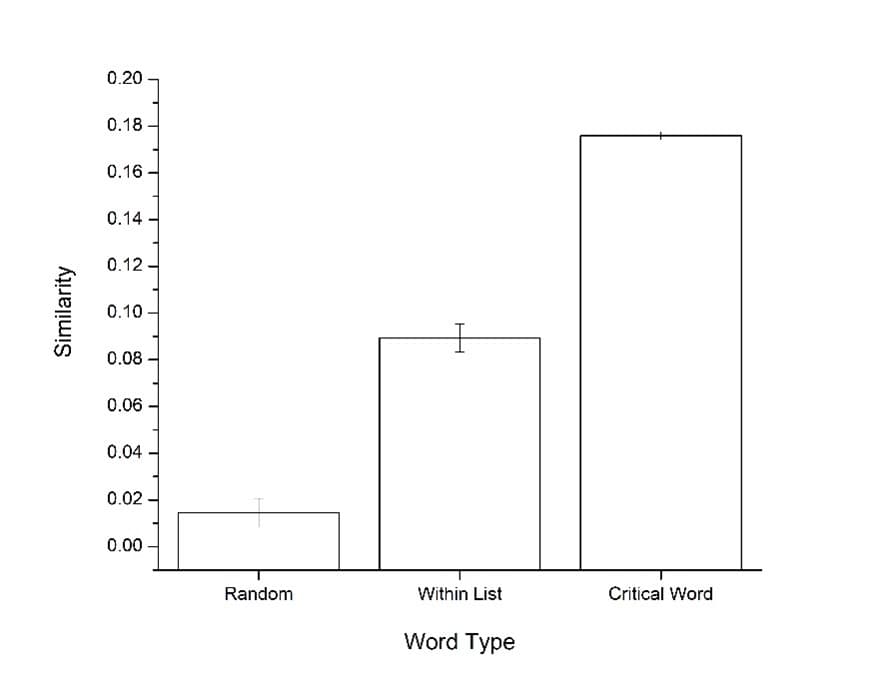Reid and Jamieson (2023) demonstrated that a Minerva 2 model when combined with representations from LSA can account for standard patterns from the DRM paradigm. However, it is unclear as to whether other distributional representations can be used to account for false memory effects. The below figure contains average cosine similarity values for three different comparison types obtained from the BEAGLE model of semantics which we previously examined in the last assignment: 1) randomly selected words, 2) within list words (e.g., hospital-nurse, hospital-medicine, nurse-medicine, etc… for the list for the critical word doctor), and 3) critical word similarity to its associates (e.g., doctor-hospital, doctor-medicine, doctor-nurse, etc…). question1 . Summarize the results of the similarity values contained in the above figure. Given the results of the above simulation, provide a justification for using distributional models as an underlying representation for a model accounting for false memory effects. In Reid and Jamieson (2023) the authors had to use a low learning rate in their Minerva 2 model to successfully account for DRM effects. Describe what the learning rate in Minerva 2 does. Using the results from the above simulation describe why you believe it is necessary to use a low learning rate when accounting for DRM results using distributional models .
Reid and Jamieson (2023) demonstrated that a Minerva 2 model when combined with representations from LSA can account for standard patterns from the DRM paradigm. However, it is unclear as to whether other distributional representations can be used to account for false memory effects. The below figure contains average cosine similarity values for three different comparison types obtained from the BEAGLE model of semantics which we previously examined in the last assignment: 1) randomly selected words, 2) within list words (e.g., hospital-nurse, hospital-medicine, nurse-medicine, etc… for the list for the critical word doctor), and 3) critical word similarity to its associates (e.g., doctor-hospital, doctor-medicine, doctor-nurse, etc…).
question1 .
- Summarize the results of the similarity values contained in the above figure.
-
Given the results of the above simulation, provide a justification for using distributional models as an underlying representation for a model accounting for false memory effects.
-
In Reid and Jamieson (2023) the authors had to use a low learning rate in their Minerva 2 model to successfully account for DRM effects. Describe what the learning rate in Minerva 2 does. Using the results from the above simulation describe why you believe it is necessary to use a low learning rate when accounting for DRM results using distributional models .

Step by step
Solved in 3 steps


